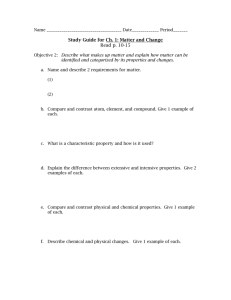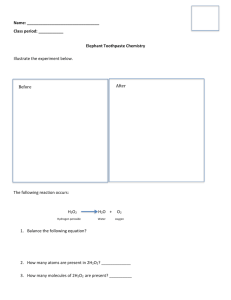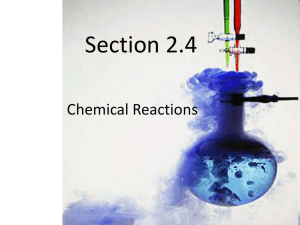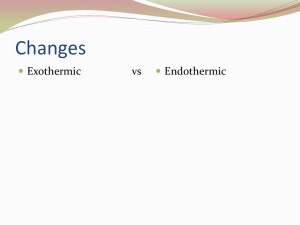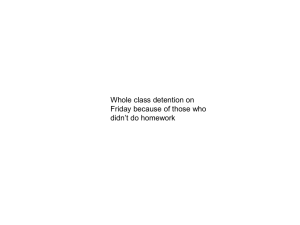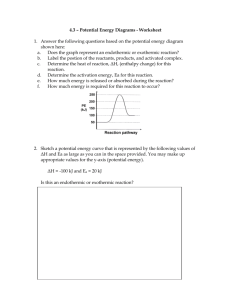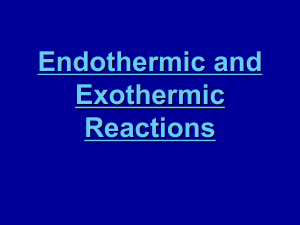Chapter 6 Section 1 guided notes complete
advertisement
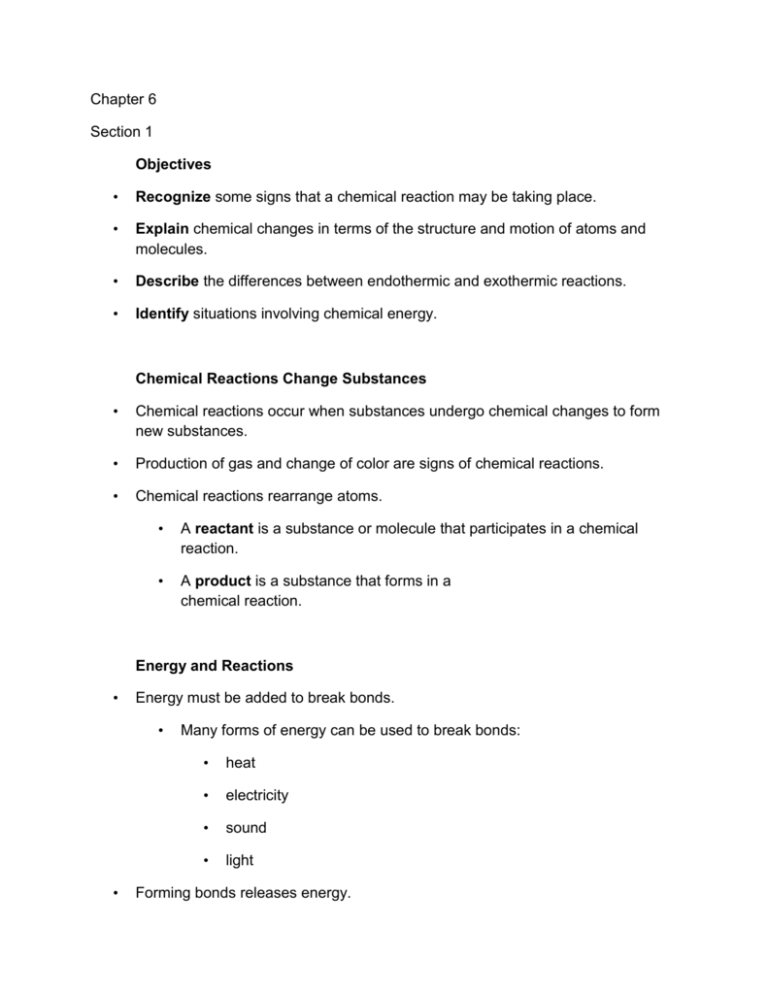
Chapter 6 Section 1 Objectives • Recognize some signs that a chemical reaction may be taking place. • Explain chemical changes in terms of the structure and motion of atoms and molecules. • Describe the differences between endothermic and exothermic reactions. • Identify situations involving chemical energy. Chemical Reactions Change Substances • Chemical reactions occur when substances undergo chemical changes to form new substances. • Production of gas and change of color are signs of chemical reactions. • Chemical reactions rearrange atoms. • A reactant is a substance or molecule that participates in a chemical reaction. • A product is a substance that forms in a chemical reaction. Energy and Reactions • Energy must be added to break bonds. • • Many forms of energy can be used to break bonds: • heat • electricity • sound • light Forming bonds releases energy. • • Example: When gasoline burns, energy in the form of heat and light is released as the products of the isooctane-oxygen reaction and other gasoline reactions form. Energy is conserved in chemical reactions. • Chemical energy is the energy released when a chemical compound reacts to produce new compounds. • The total energy that exists before the reaction is equal to the total energy of the products and their surroundings. • An exothermic reaction is a chemical reaction in which heat is released to the surroundings. • An endothermic reaction is a chemical reaction that absorbs heat. • The graphs below represent the changes in chemical energy for an exothermic reaction and an endothermic reaction. • The graphs below represent the changes in chemical energy for an exothermic reaction and an endothermic reaction.
